There was a time in my life, starting in the late 1990s and lasting several years after that, where I’d pore over every car magazine I could get my hands on looking for one specific thing. Sure, I devoured the latest news and reviews. But more than anything, I wanted to know what was going on with the new Toyota Supra.
I grew up in a family that had lots of Toyotas. My first car was a Corolla. I loved The Fast and the Furious when it came out. But even though I was barely into my driver’s license at the time, or that I could hardly afford such a car, it stung hard that Toyota’s halo car was no more. I wanted badly for a new Supra to just exist, for it to be real. It was just something I wanted out there in the world.
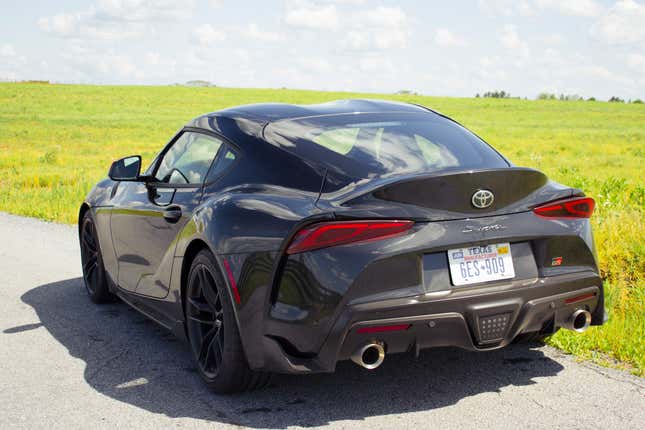
Fast-forward 20 years. The new Supra is a thing, at long last. But if you had told me when I was a teenager that its comeback would mean a car more like a BMW M3—or more precisely, a BMW Z sports car—than any other Toyota, I’d have found that unthinkable. Crazy, even.
Yet the world is a different place now. And market forces necessitated the Supra become a different car as well. The good news is that while this Supra is radically distinct in form and mission from any one that came before, it happens to be excellent—powerful, capable in the corners, fast, full of the good noises, pretty nice inside too, and fun to drive above all else.
I just wish it had a manual transmission.
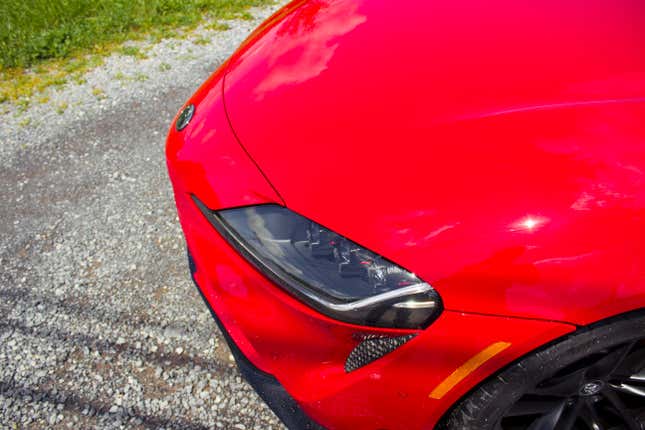
(Full Disclosure: Toyota flew me out to Virginia, paid for my hotel, booze and food, and supplied me with track time with the car.)
“This is not a car we needed to make,” Jack Hollis told a group of reporters eager to test it before heading out to West Virginia’s Summit Point Motorsports Park. “This is a car we wanted to make.”
Hollis has been waiting a long time for this day, just like I have. Today he’s group vice president and general manager of the Toyota brand in North America, and he’s been with the company 27 years.
For the last 20 of those years he’s been besieged by one question from neighbors, friends, employees and relatives: “When’s the Supra coming back?”
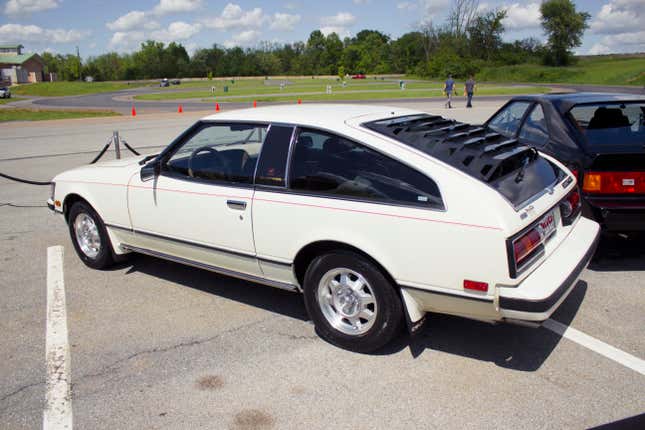
The car is an icon now, albeit one with a stranger evolution than most will admit. It was born in the late 1970s as a larger, six-cylinder version of the everyperson Celica sports coupe. Then it grew into a hefty, plush highway cruiser, and ultimately fell into a pit of Japanese Bubble Era excess—big wing, big turbo power, big price tag.
The Supra “did okay” in the 1990s, Hollis said. That is a polite way of saying it declined in sales every year and ballooned in price as it struggled to meet emissions standards before being put out to pasture in North America in 1998.
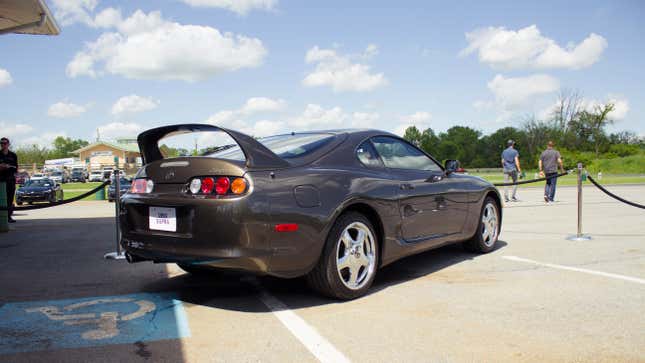
But even Hollis admitted the Supra’s legend was really born three years later, when the first Fast and Furious movie showcased a neon orange thunderbolt publicly shaming a Ferrari thanks to overnight parts from Japan for its 2JZ-GTE engine. In recent years the fourth-generation Supra has become more coveted by collectors than tuners, and clean low-mileage ones regularly command six figures at car auctions.
Though the reality was no match for the legend, the legend is what the new Supra—technically named the GR Supra, for “Gazoo Racing”—competes against today.
Having said that, “current industry dynamics favor high-volume cars,” Hollis said. That means that even when you’re Toyota and you sell more RAV4s than Porsche sells cars, period—and even when this is a car you want to make—it’d be madness to dump hundreds of millions of dollars into a niche sports car program at a time when that market is tanking. Plus, you need to spend money on autonomous vehicles and electrification instead. So Toyota went a different route.
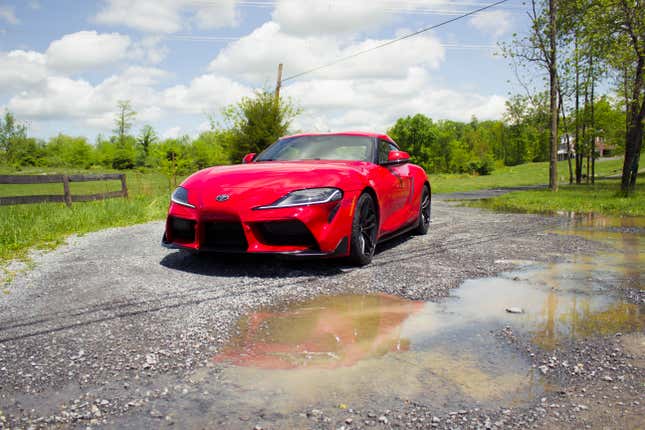
Tetsuya Tada has been waiting for this day maybe longer than anyone. As an engineer, he was supposed to work on the fifth-generation Supra in the late 1990s, before that program was scuttled when said Bubble burst and Japan’s economy and car industry summarily went with it.
Then in 2012, he abruptly left the European media launch drive of his other sports car baby, the Toyota 86, and hopped on a plane in secret to Munich. Since it was decreed from on high that a new Supra needed an inline-six like it always had, his mandate was to see if BMW—chief purveyors of that engine in modern times—wanted to team up. (Read a lot more about this car’s development saga in my interview with Tada here.)
They did, Tada said. And after much discussion, it turned out BMW’s engineers had a great desire for their new Z4 to be more, to be a purer and better sports car than it’d ever been. Something that could give the acclaimed Porsche Boxster and Cayman what they felt was a needed black eye.
It was from that starting point that these two companies began their work. But Tada is very adamant that he and his engineers didn’t just put a “shell” over a BMW. The cars have the same platform and same engine, but different bodies, different tuning of the engine, suspension and gearbox, and very little communication took place between the teams besides joint testing and the occasional “How’s things?”
Specs That Matter
The end result is a Supra that’s no longer a luxobarge or just a straight-line champion. Unlike every past Supra it’s a two-seater this time, not a 2+2. If it had a back seat, it would not have had the handling characteristics they wanted, Toyota’s people told me.
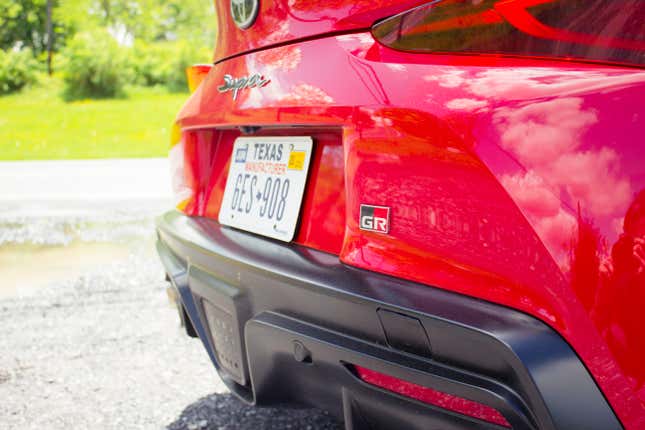
The Supra is powered by a Toyota-tuned version of BMW’s B58B30M1 3.0-liter twin-turbo inline-six, same as you’ll find in the new X5 and soon other cars. It’s an alloy block this time, not an iron block like the 2JZ was, leading to some tuner fears that gains won’t come as reliably as they once did. We will see how that goes.
The Supra is rated at 335 horsepower and 365 lb-ft of torque starting at an ultra-low 1,600 RPM. It weighs a not-bad 3,397 pounds, boasts an ideal 50/50 front/back weight distribution and rockets to 60 mph in 4.1 seconds, making this the quickest (stock) Toyota-branded car ever. Power goes to the rear-wheels alone; all-wheel drive is not an option here. Benchmarked against the Cayman, it is said to have a different character than its Z4 sibling.
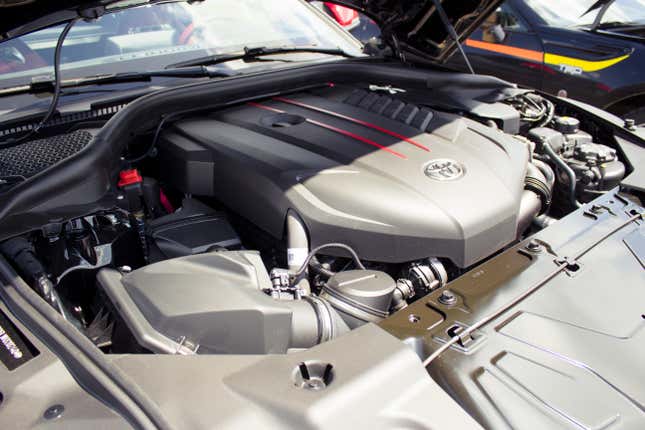
At the same time, the sole transmission option is a paddle-shift ZF8 automatic gearbox—the best conventional torque converter-based automatic ever made. As it is in every application, it’s good here. But in many circumstances it just can’t replace the fun of a stick-shift.
Inside And Out
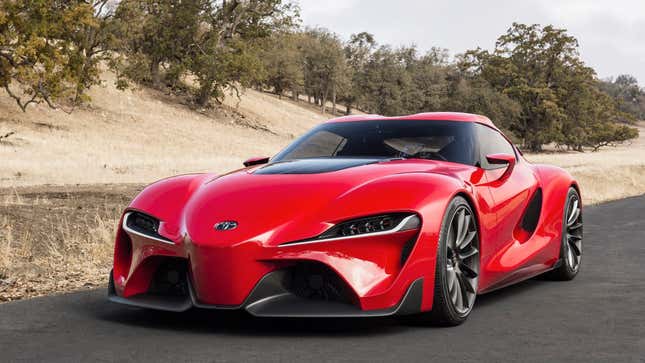
At this event Hollis finally admitted, yes and officially, that the stunning FT-1 Concept born two years after BMW and Toyota struck their secret deal was in fact an attempt to explore the possibility of the Supra coming back.
The positive reaction to the concept made them do it, he said.
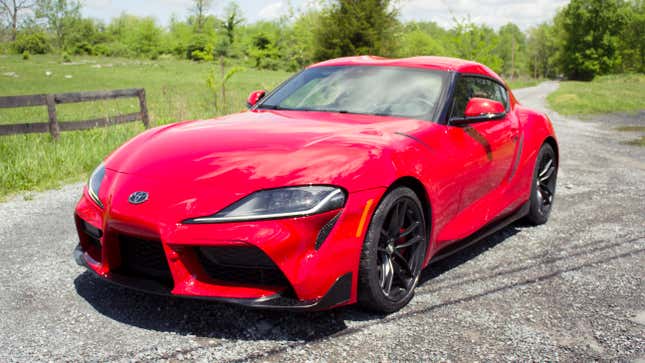
The final product isn’t 100 percent dead-on accurate—the FT-1 was long, wide and imposing, an absolute unit of a car, like something Batman would drive. But the designers nailed a lot of the important stuff. The headlights, the overall shape, the double Gurney Bubble roof, the wide hips and the conical nose all carried over fairly well. It’s also smaller in person than it would seem in photos.
The looks have been polarizing, and while I won’t call the new Supra classically beautiful, I do like how it turned out. It has the ideal sports car proportions—long hood, compressed cabin, short rear deck. And that rear spoiler is in fact a salute to the last Supra’s famous deck hoop, though it’s comparatively more subtle now.
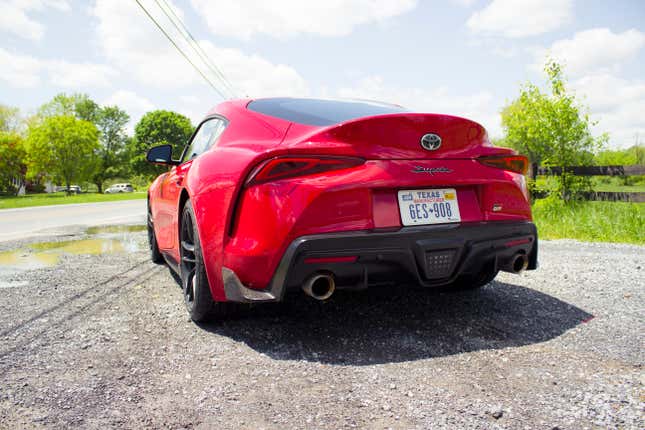
In other aspects it’s a bit... much. All of the vents are for aesthetics only, not functionality. And that low roofline and thick A- and B-pillars make for not-great visibility from the cabin. It’s not Camaro-bad, very few cars are, but it does feel like window real estate space wasn’t a priority here. You’ll depend heavily on the camera in reverse.
On the plus side, it’s actually very nice inside. It feels premium like a $50,000+ car should, full of soft leather, actual carbon fiber inserts on the center console and high-quality materials all around. Being that this is a BMW underneath you also get the generally excellent modern iDrive instead of, say, the infuriating track-mouse thing that Lexus uses. And it is standard iDrive—nothing special for the Supra here.
The digital gauge cluster works great too, though the car has just an 8.8-inch touchscreen instead of one of the larger BMW units, to save space. (There’s a Toyota-first wireless Apple CarPlay, too, but Toyota’s undecided as to whether you’ll need to keep paying for it the way BMW requires.)
It’s nice to be inside the Supra. While visibility isn’t superb, it is a comfortable place to be, with perfectly bolstered seats and good functionality. Toyota, or BMW or whoever, has succeeded in making a convincing luxury sports car with many grand tourer touches. I’d be happy to road-trip in this thing, something you can’t say for all sports cars.
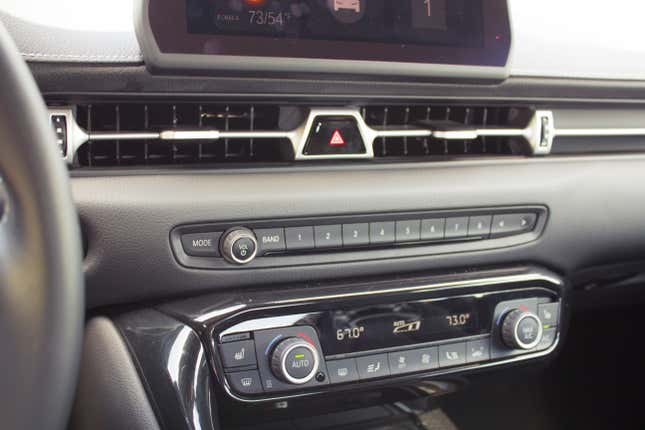
I do wonder why so much dash space was wasted with a row of numbered radio preset buttons. When was the last time you used those? I don’t think I have at all, this decade. Volume buttons are one thing, but the row feels overkill. (Update: OK, as several of you readers have pointed out, you can use those buttons to pre-program various functions besides just the radio. I’ve always been perfectly happy using iDrive, myself, but if you find this useful have at it.)
A Different Character
I’ll note up front that I have yet to drive the new BMW Z4. But I feel like I have a solid frame of reference here. I’ve driven basically every performance BMW made over the past six or seven years; humble lease-special 2 Series coupes, the M3 Competition, the M4, the M5, the Alpina B7, the i8 and beyond. Just two weeks before this event, I was in the new M2 Competition.
That’s why I was genuinely surprised to find out that despite sharing hardware, Toyota’s specific tuning to key areas did make the car feel like its own animal compared to those other BMWs—like it has a unique character all its own.
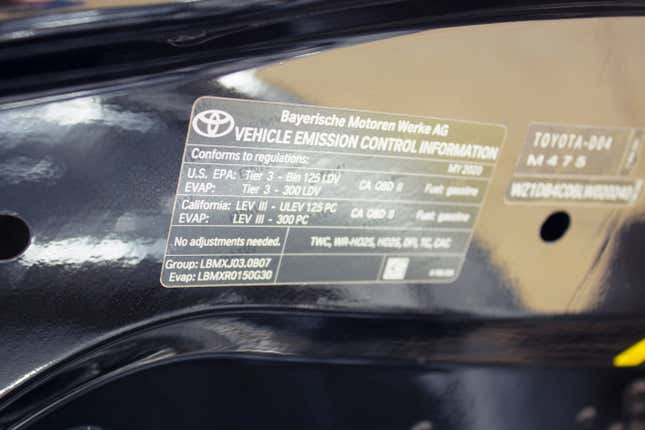
For one, the ride is much smoother and more compliant than most performance BMWs have been lately, which addresses my chief complaint about those cars. The Supra is a much more comfortable car to drive over bad roads than any M car without giving an inch in handling prowess.
Then there’s Sport Mode, a giant button (much appreciated here) which transforms the Supra’s behavior more radically than just about any other modern non-supercar I’ve driven.
It’s not a subtle thing: this mode changes the engine, gearbox, steering mapping, firms up the active dampening and greatly amplifies the exhaust sound.
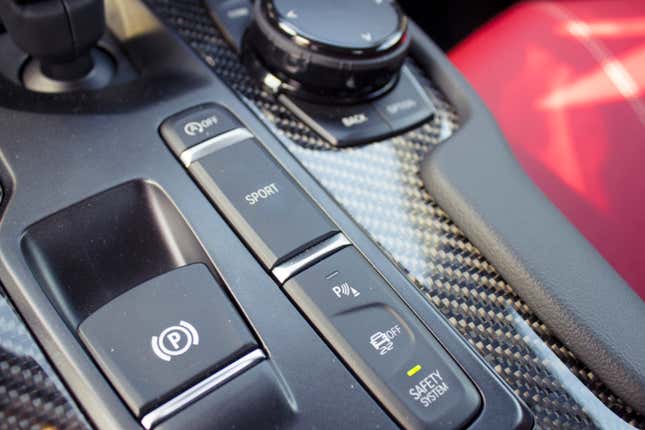
The button puts it in Galaxy Hoon mode, where it’s a snapping, snarling, popping-and-growling monster—far louder than even the M2.
In normal driving the Supra is fast and fun, like a smaller, lighter, louder, more nimble M240i. But in Sport Mode it’s a near-beer M car, only louder still, and with a better ride than any M car I’ve tested in recent memory. Additionally, electronic stability control can be dialed down or turned off entirely.
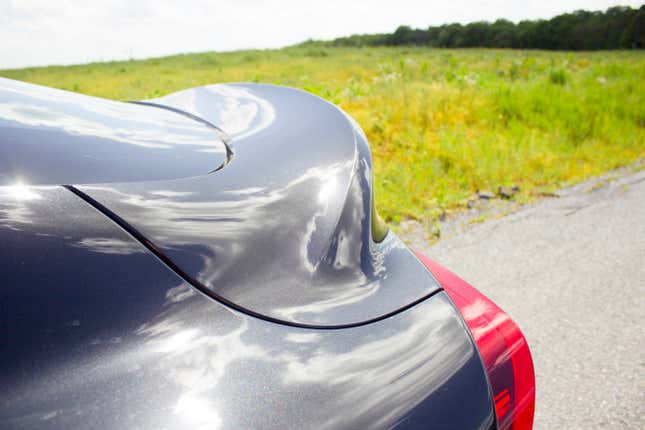
The typical German restraint feels gone here. The example that comes to mind—and I work in media, so forgive me for going here—is that the Supra’s like a beloved magazine getting a new editor. Sure, the audience, many writers and coverage areas are all the same, but there’s maybe a new spin on things, a different feel to it all. It really feels like a unique take.
Toyota’s engineers say that of the two, the Z4 is the softer, more luxury-oriented one, more prone to understeer, more for a driver less likely to spend money on a track day. “One’s a cruiser and one’s a sports car,” Hollis said. I’ll have to see if he’s right someday soon.
How Does It Drive?
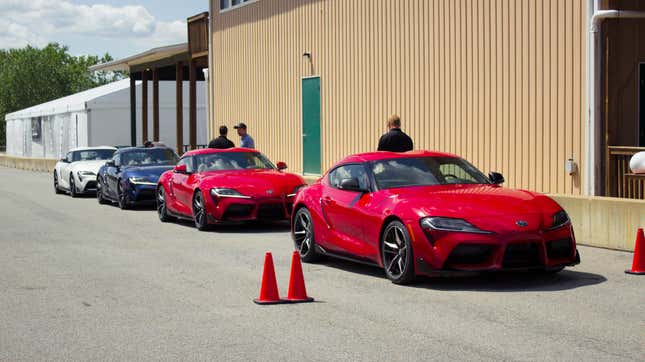
First and foremost, it’s very, very quick. The 335 HP figure may not sound like much in a world where the Hellephant is a thing, but in true BMW fashion it’s probably underrated. Regardless of numbers, the car snaps forward with urgency and an instant delivery of torque.
Make no mistake: the new Supra is a fast car. The 4.1-second zero to 60 mph claim sounds right. It’s quicker, and feels quicker, than I expected.
Out on the back straight of Summit Point’s Shenandoah Circuit I easily had it well over 100 mph, and at a longer, faster track like Circuit of the Americas I’m positive you’d run up against the 155 mph electronic limit.
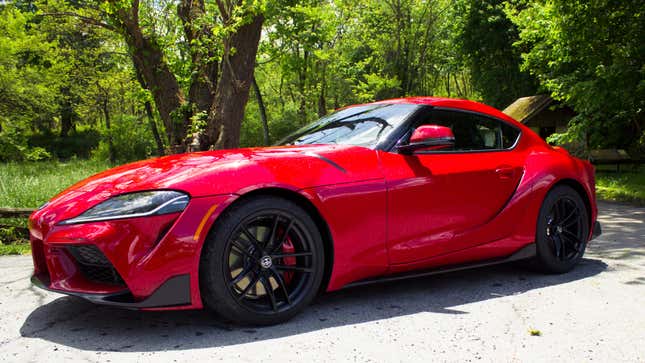
Then there’s the sound, the thing Tada told me he was most proud of. On or off throttle, but especially off, you’re treated to a symphony of pops and bangs that rivals that of the V6 and V8 Jaguar F-Type in terms of volume and quality. It’s truly one of the better-sounding sports cars you can buy right now.
When the drivers at Summit Point threw their cars into a hard drift or a high-speed run, it sounded like a Howitzer going off in the distance. And Tada had a giant grin on his face every time he heard it.
I wasn’t able to get a video myself, but Shifting Lanes did. Take a listen:
It’s a car where the sound alone makes you find excuses to go for a drive.
On the track, I thought the Supra fell short of its goal to be a Cayman-killer. The steering is direct and with a good amount of feel here, and body roll—if there was any—is barely noticeable. Tada says the chassis overall is twice as stiff as the 86, and “almost better” than the Lexus LFA.
It’s an extremely sharp handler, one eager to get sideways. The Supra’s extreme neutrality in corners lets you find its limit easily and without surprises. It feels lighter than its weight would imply, and never feels cumbersome the way an F-Type does. To boot, it feels smaller than a Mustang or even a Corvette, though that long hood gets in the way more than, say, a BRZ’s would. (Stay tuned for a direct comparison between Toyota’s two sports cars.)
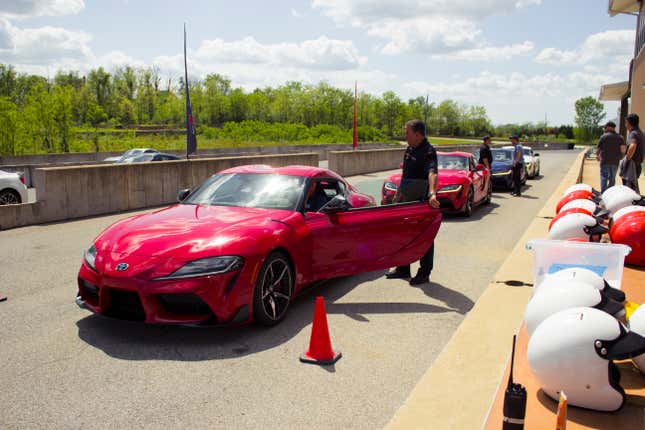
But it lacks the tightness that the Cayman has, the directness, the ability to change direction on a dime as if controlled by thought alone. And in the end, even with a 50/50 weight distribution it cannot overcome the inherent advantages of a true mid-engine layout.
Still, laps at Summit Point proved that while it’s got an accessible level of performance, it’s not what I would call a novice performance car on track. Thanks to its speed alone you can get into trouble into this thing if you want. It’s not for total idiots or beginners. While I can’t say it’s the best handling car I’ve ever driven or anything truly groundbreaking in that department, it is extremely good at what it does, and will provide a rewarding and challenging experience for owners.
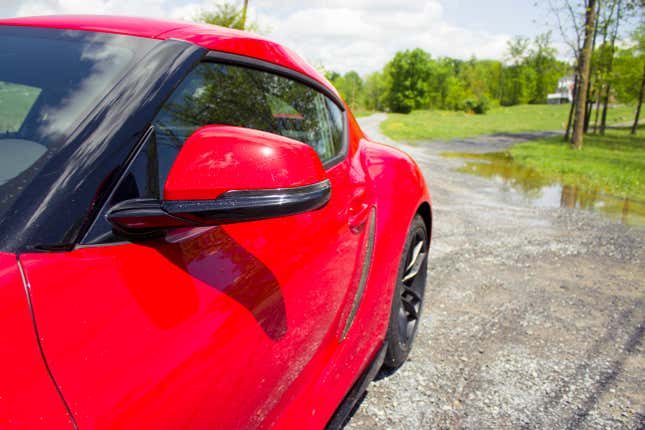
I had the most fun when I was storming the backroads around Summit Point. Granted, part of this media drive was in Virginia, where I was watching my ass about 10 times more than normal because I have zero desire to go back inside, but on the West Virginia rural-road side of things the car was just an absolute blast.
I had a moment where (and I may or may have had some Eurobeat blasting over the Bluetooth, I decline to say on the record) I shot out of a corner at highway speeds with the Supra tucked in neatly and the exhaust note cracking all around me where I said, out loud, “I love driving this thing.”
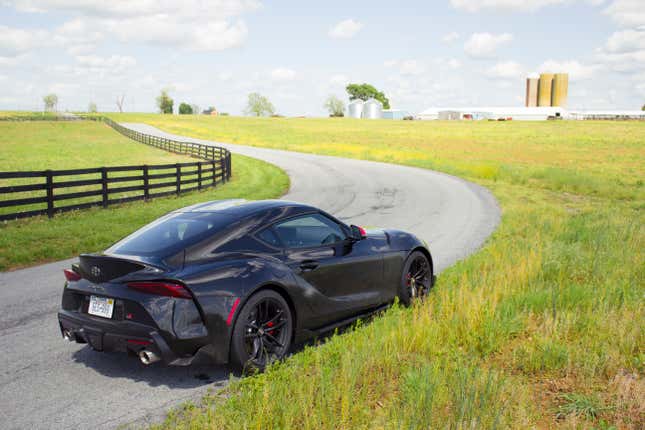
I had a feeling I’d like the new Supra, if only because I feel BMW guts are a good thing and I’d just be happy it existed. But I did not expect to have that kind of reaction.
About That Lack Of A Manual
There was another thing I said, audibly, just a few moments earlier than that: “I really wish this thing had a stick.”
I was hoping that wouldn’t be the case, because honestly, I find the “no manual, no care” thing to be an utterly boring point of criticism. Plenty of modern cars don’t have traditional manual transmissions and offer a thrilling experience. I can’t say I’ve missed it on any DSG-equipped Volkswagen GTI, PDK-equipped Porsche, Cadillac CTS-V or BMW M5 I’ve driven.
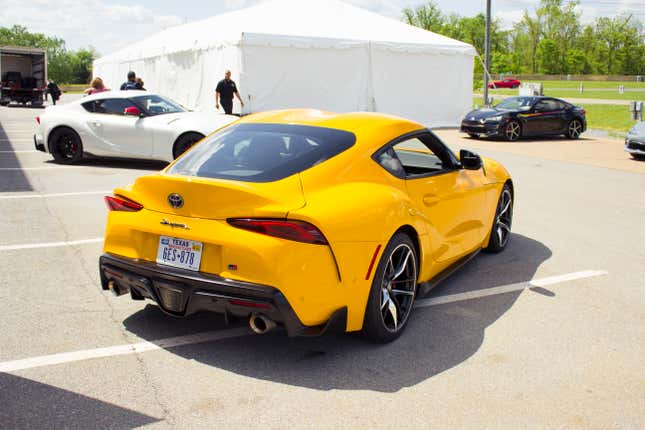
But something is just different when you’re talking about a small, agile, two-seat sports car. In this one, I found myself actually reaching for a clutch that wasn’t there, a shifter that wasn’t there. I don’t do that often. The absence was noticeable here.
Don’t get me wrong, my praise for the very good ZF8 stands. It’s a superb automatic. It’s fast and smooth, offering quick paddle shifts without the day-to-day annoyances you sometimes get from a dual-clutch gearbox. And on the track, most of the time I was content to leave it in full automatic mode, because it is smarter than I am.
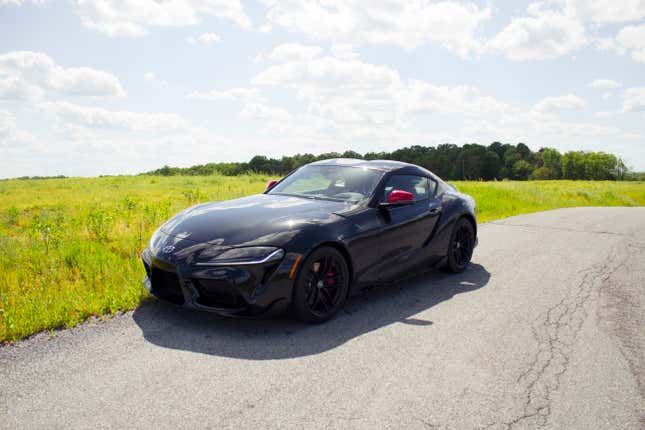
Not having a stick shift at all feels out of character here, especially when you can get one on the BMW Z4 (though just not in America.) Its omission is perhaps the most glaring flaw I found in an otherwise surprising, rewarding machine.
Will we ever get a stick on the Supra? I brought it up with Tada, who laughed and, through an interpreter, told me something to the effect of “start a petition,” probably because he’s tired of hearing this question. That’s pointless, so I won’t, but I will say that in a car made from controversial decisions, this is one I can’t get behind.
Value
I do not think the missing manual is an instant deal-killer, though. If I were a prospective Supra buyer, I could live without the manual. And in fact the Supra is a pretty solid deal.
The new Supra comes in three trims: the base GR Supra 3.0, starting at $49,990; the GR Supra 3.0 Premium at $53,990; and the GR Supra 3.0 Launch with the red interior and mirror caps at $55,250. The last one is limited to 1,500 units only. (Worth noting: it’s cheaper than the last Supra was. In 1996 a Supra Turbo started at $50,600, which would be about $82,000 in today’s dollars.)
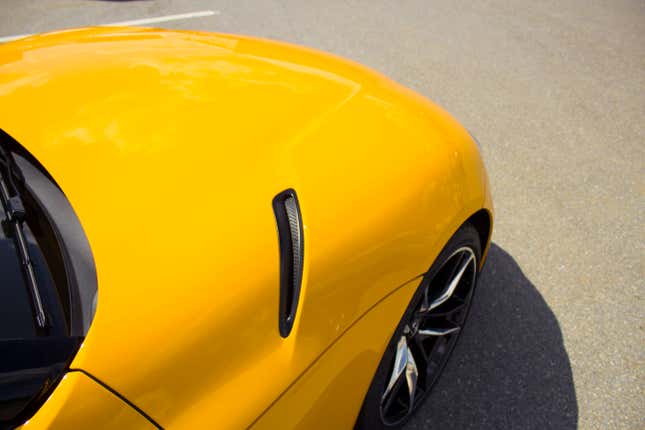
Expect dealer markups to be nuts at first because they always are, but these cars come very well-equipped. The only real options are the Driver Assist Package and the 12-speaker JBL Audio system, and those are both standard on the upper two trims. That’s it! Every Supra will pretty much list under $60,000. They’re not nickel-and-diming you to death here the way Porsche does with every option (or, in some cases, every lack of option.) While it isn’t cheap, for everything you get here, the Supra feels worthy of its price.
It’s already a better value than the base or V6 F-Type, and, considering that a base Boxster or Cayman are pretty much impossible to find out in the wild in the $50,000 range, it’s a strong competitor out of the gate. I even found it more fun than the F-Type SVR, if only because the Supra’s some 400 pounds lighter despite being less powerful. It’s also nearly $14,000 cheaper starting than a six-cylinder Z4.
I suppose its biggest challenger might be BMW’s own M2 Competition, or even a Mustang GT350, although the latter is a very different car than this one. A Chevrolet Corvette Stingray is a better all-around performance value and it can be had with a stick, but I’m not sure how many people will really cross-shop the two.
At the very least, we need more fun, fast sports cars, not fewer, and the new Supra is a compelling additional choice in that world.
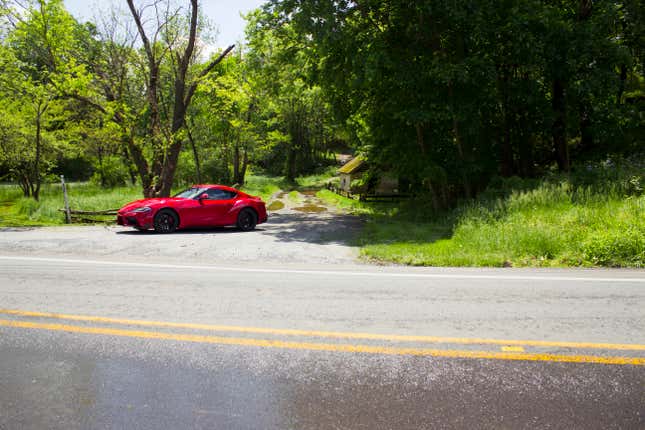
Early Verdict
No, this is not the Supra we expected. It doesn’t have a Toyota platform, or a Lexus platform, or a twin-turbo V6 or a V8. It doesn’t have a six-figure price tag like a Nissan GT-R. It doesn’t replace the 86 as some bargain basement sports car, either.
After driving it, finally, I can conclusively say none of those things are bad things. The new Supra is good. I’m glad it exists at last. I’m glad it is real. But no matter how fun it was, I think it’s an F-Type-killer, but not a Cayman-killer.
At least, not yet. If you ask Tada, this is just the beginning.
“This is not the end of the Supra,” he told us over dinner when our track day was completed. “This is the beginning. That might include variations. Please consider this the foundation of the Supra, the first step.” He was coy as to whether that meant more power or a stick or something even more extreme.
I’m eager to find out, just like I was when I was 16, tearing through those car magazines in search of something I hoped would be real someday.

